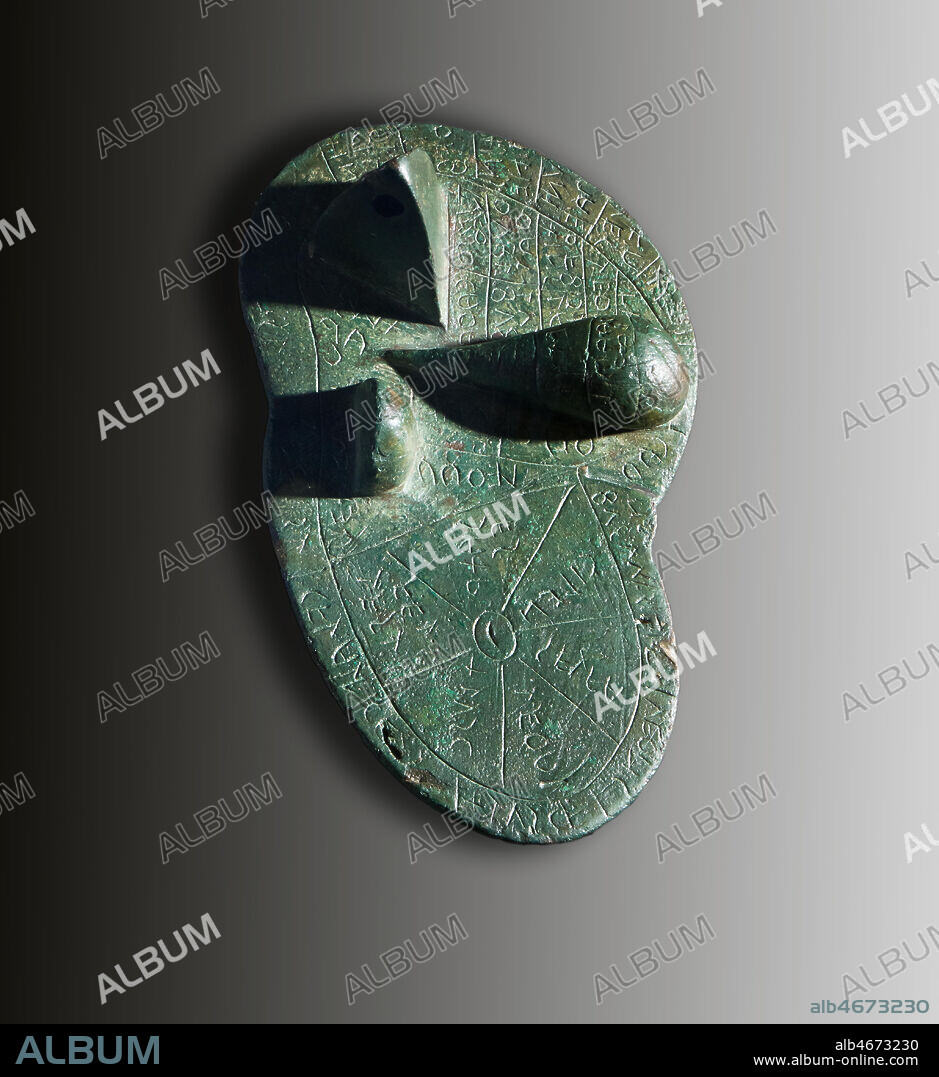alb4673230
Piacenza, Palazzo Farnese, Municipal Museums: Etruscan Liver. The Liver of Piacenza is an Etruscan artifact found in 1877, near Gossolengo, in the province of Piacenza. It is a life-sized bronze model of a sheep's liver covered in Etruscan inscriptions (TLE 719), measuring 126 mm by 76 mm by 60 mm and dated to the late 2nd century BC, i.e. a time when the Piacenza region would already have been Latin-dominated.. The liver is subdivided into sections for the purposes of performing haruspicy (hepatoscopy). The outer rim of the Piacenza liver is divided into 16 sections; since according to the testimony of Pliny and Cicero, the Etruscan divided the heavens into 16 astrological houses, it has been suggested that the liver is supposed to represent a model of the cosmos, and its parts should be identified as constellations or astrological signs.

|
Add to another lightbox |
|
Add to another lightbox |



Caption:
Piacenza, Palazzo Farnese, Municipal Museums: Etruscan Liver. The Liver of Piacenza is an Etruscan artifact found in 1877, near Gossolengo, in the province of Piacenza. It is a life-sized bronze model of a sheep's liver covered in Etruscan inscriptions (TLE 719), measuring 126 mm by 76 mm by 60 mm and dated to the late 2nd century BC, i.e. a time when the Piacenza region would already have been Latin-dominated.. The liver is subdivided into sections for the purposes of performing haruspicy (hepatoscopy). The outer rim of the Piacenza liver is divided into 16 sections; since according to the testimony of Pliny and Cicero, the Etruscan divided the heavens into 16 astrological houses, it has been suggested that the liver is supposed to represent a model of the cosmos, and its parts should be identified as constellations or astrological signs.
Credit:
Album / Ghigo Roli
Releases:
Model: No - Property: No
Rights questions?
Rights questions?
Image size:
4096 x 4467 px | 52.3 MB
Print size:
34.7 x 37.8 cm | 13.7 x 14.9 in (300 dpi)
Keywords:
ART • ARTFORM: BRONZEWORK • ARTS • BRONCE • BRONZE BRASS • BRONZE • BRONZES • ETRUSCAN AGE • ETRUSCANS, THE • FORTUNE TELLING • FUTURE • HARUSPICY • HISTORIA UNIVERSAL • HISTORY • ITALIA • ITALY • LEGEND • LIVER • MAGIC • MUSEUM • MUSEUMS • OVIS ARIES • PALAZZO FARNESE CIVIC MUSEUMS • PIACENZA (PC) • PROPHECY • SHEEP
 Pinterest
Pinterest Twitter
Twitter Facebook
Facebook Copy link
Copy link Email
Email

